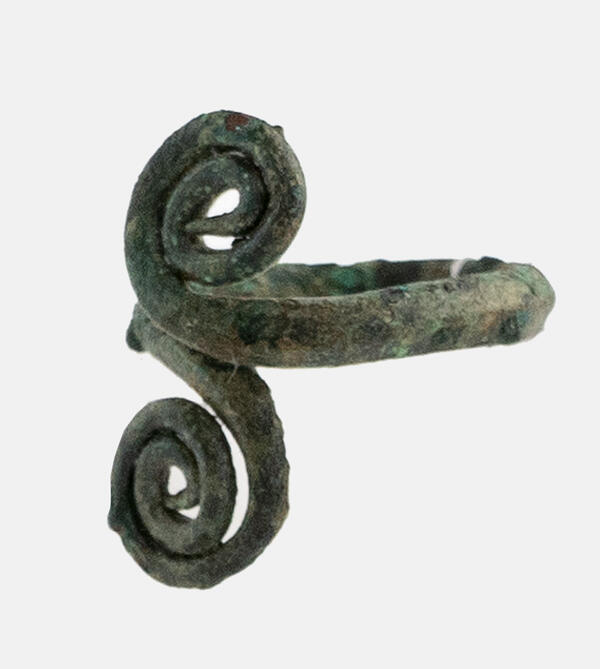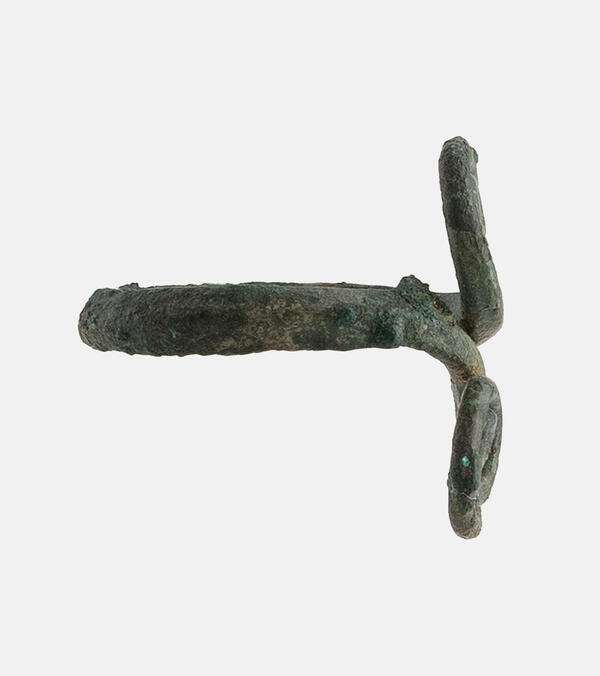The history of the ring goes back into the ancient past. In the Paleolithic, rings made of bone were worn, with the first metal rings appearing in the Bronze Age. The ring was considered a symbol of unity and eternity, reflected in its continuous shape having neither beginning nor end. Originally rings were used as ceremonial objects during rituals.
In 2003 during excavations in the Stepnoye VII burial ground (Stepnoye village, Chelyabinsk region) a number of bronze rings were found among many other artifacts. The rings were made of three or four-sided or semi-circular bronze wire in cross-section. The ends of the wire were flattened and coiled two full circles into a flat spiral of 1.1 cm in diameter. The buttons meet with edges and are arranged perpendicular to the ring, forming an S-shaped (or figure 8) shield. The diameters of the rings are different, as with modern rings, they depended on the finger size: from 2 to 2.5 centimeters. The diameter of the ring in the photo is 2.3–2.4 centimeters. The shank of the ring has a suboval shape.
Six bronze rings were found in grave No. 17 of the Stepnoye VII burial site, five of which were on the fingers of the buried man’s left hand. Another ring was found under the bones of the skeleton, near the shoulder blade.
The researcher of the Stepnoye VII burial site, Elena Kupriyanova, points out that the asymmetry in the Bronze Age jewelry sets of the Southern Trans-Urals and Kazakhstan shows a predominant emphasis on the left side of the body. Thus, in grave No. 17 rings were only on the fingers of the left hand of the buried person. Besides the rings, the buried teenager of 15–17 years old was provided with a complex set of jewelry: a facial pendant, a plait ornament, pendants turned full and a half circle wrapped in gold foil, bronze temple rings, bronze bracelets, amulets made of fox fangs and incisors, and a bronze ax. The buried man himself was lying in the “embrace pose”, facing another buried man: the first one was on his back with the upper part of his torso, arms and head turned to the right side, the second one was on the left side. The hands of the first buried person lay on top of the chest of the second one.



